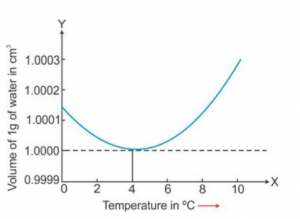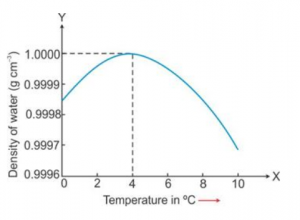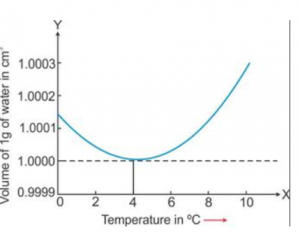Heat and Energy Exe-6A Short Answer Physics Class-9 ICSE Selina Publishers. There is the solutions of short Answer type Questions of your latest textbook which is applicable in 2024-25 academic session. Visit official Website CISCE for detail information about ICSE Board Class-9

Heat and Energy Exe-6A Short Answer Type
Physics Class-9 ICSE Selina Publishers
| Board | ICSE |
| Class | 9 |
| Subject | Physics |
| Writer / Publication | Concise Selina Publishers |
| Chapter-6 | Heat and Energy |
| Exe-6A | Heat and Temperature Anomalous Expansion |
| Topics | Solution of Exe-6(A) Short Answer Type |
Academic Session |
2024-2025 |
Short Answer Types :
Exercise- 6A Heat and Temperature
page -145
Q1- Distinguish between heat and temperature.
Ans-
| Heat | Temperature |
| 1.Heat is a form of energy obtained due to random motion of molecules in substance. | The temperature of a body is the parameter which indicates how hot or cold it is. |
| 2.Heat is defined as the flow of energy from a warm to a cooler object. | The average kinetic energy of the particles in an object is measured by temperature. |
| 3.Heat energy is transferred from a higher-temperature material to a lower-temperature substance. | The motion of particles increases as the temperature rises |
Q2- What do you understand by thermal expansion of a substance?
Ans- Thermal expansion is the tendency of any substance to change its shape, volume, and area in response to a change in temperature.
Q3- Name the three kinds of thermal expansion. Out of solids, liquids and gases, which expand more ?
Ans- The three kinds of thermal expansions are :
- Linear expansion
- Superficial expansion
- Cubical expansion
Q4- State the volume changes that you will observe when a given mass of water is heated from 0°C to 10°C. Sketch a temperature-volume graph to show the behaviour.
Ans- When a given mass of water is heated from 0°C to 4°C , it contracts, i.e. the volume decrease .On heating from 4°C to 10°C , it expands, i.e. its volume increases.

Q5- Draw a graph to show the variation in density of water with temperature in the range from 0°C to 10 °C.
Ans-

Q6- A given mass of water is cooled from 10°C to 0°C. State the volume changes you will observe. Represent these changes on a temperature-volume graph.
Ans-

Q7- Explain the following :
(a) Water pipes in colder countries often burst in winter.
Ans(a)- In the colder countries the water pipes often burst because when the water gets close to freezing it expands inside the pipe, so its increases in the pressure inside the pipe, and when it gets too high the pipe bursts.
(b) In winter, water tank (or ocean) starts freezing from the surface and not from the bottom.
Ans(b)- In winters, when temperature falls, the surface of water in the tank contracts, becomes denser and sinks to the bottom. A circulation is thus set up until the entire water in the tank reaches its maximum density at 4°C. If the temperature falls further, then the top layer expands and remains on the top till it freezes. Thus, water in a tank starts freezing from the top and not from the bottom.
(c) Fishes survive in ponds even when the atmospheric temperature is below 0°C.
Ans(c)- The anomalous expansion of water helps preserve aquatic life during very cold weather. When temperature falls, the top layer of water in a pond contracts becomes denser and sinks to the bottom. A circulation is thus set up until water in the pond reaches its maximum density at 4°C. If the temperature falls further, then the top layer expands and remains on the top till it freezes. Thus, even though the upper layer are frozen, the water near the bottom is at 4°C and the fishes can survive in it easily.
(d) A hollow glass sphere which floats with its entire volume submerged in water at 4°C, sinks when water is heated above 4°C.
Ans(d)- On heating water above 4°C, the density of water decreases. As a result, the upthrust acting due to water on hollow glass sphere also decreases, which cause it to sink.
(e) A glass bottle completely filled with water and tightly closed at room temperature, is likely to burst when kept in the freezer of a refrigerator.
Ans(e)- Inside the freezer, when the temperature of water falls below 4°C, the water in the bottle starts expanding. If the bottle is completely filled and tightly closed, there is no space for water to expand, and hence, the bottle mat burst.
— end of Heat and Energy Exe-6A Short Answer Physics Class-9 ICSE Selina Publishers :—
Return to: Concise Selina Physics ICSE Class-9 Solutions
Thanks


